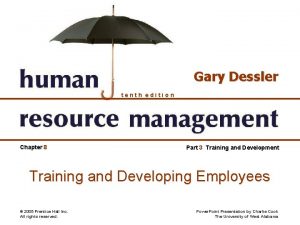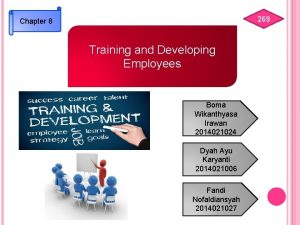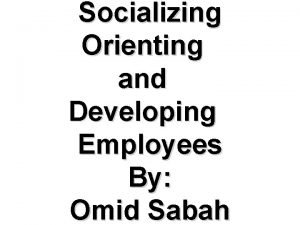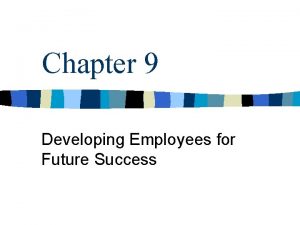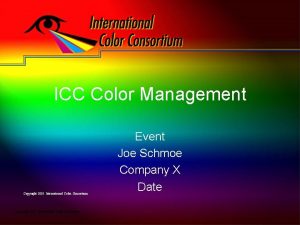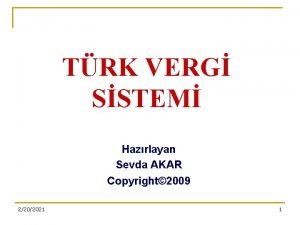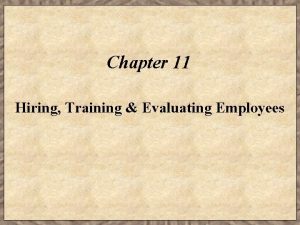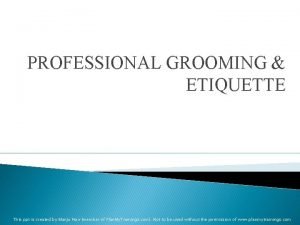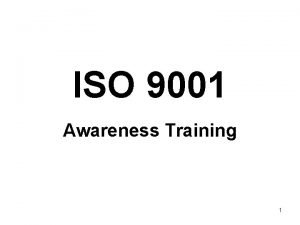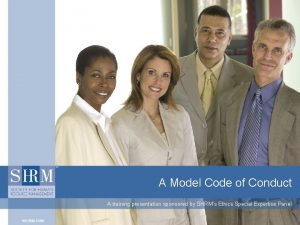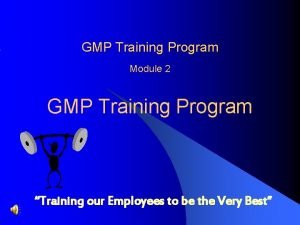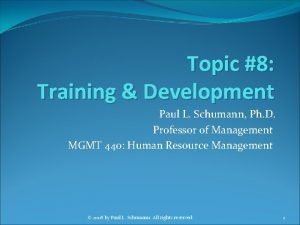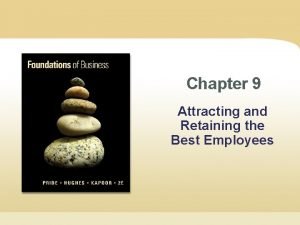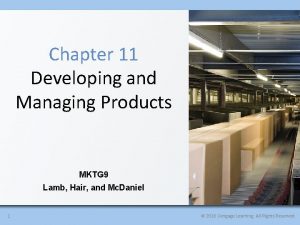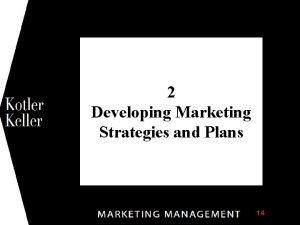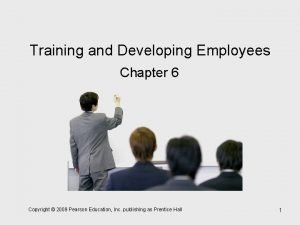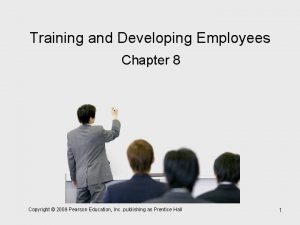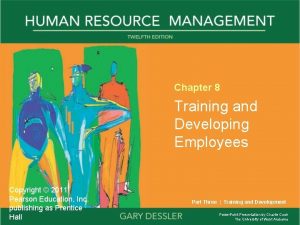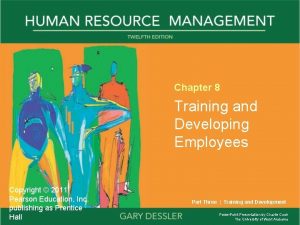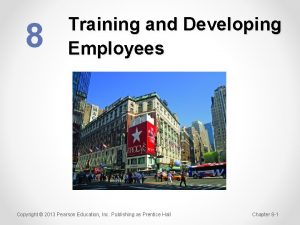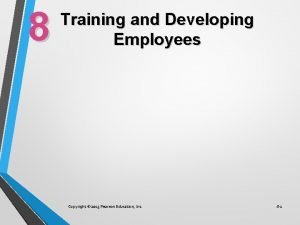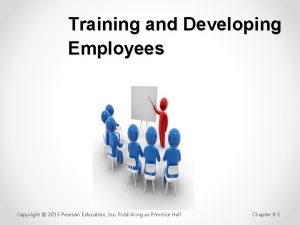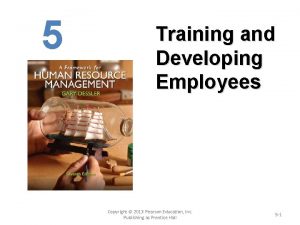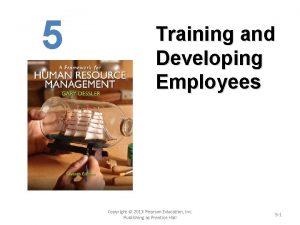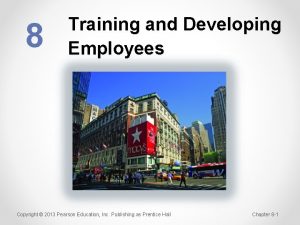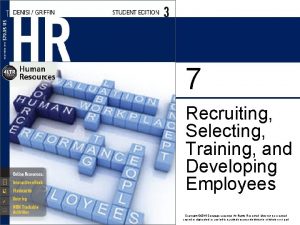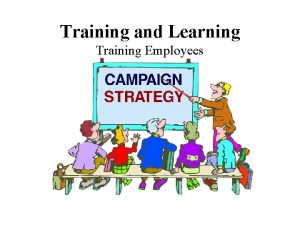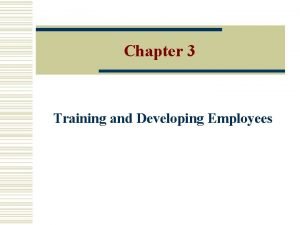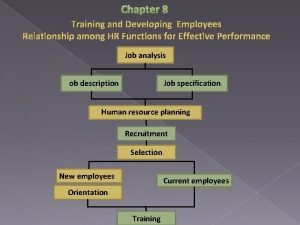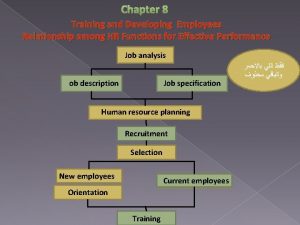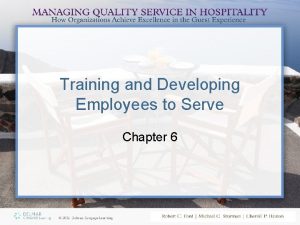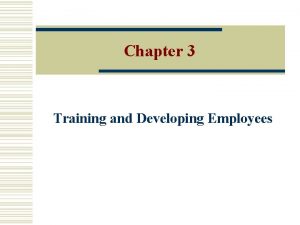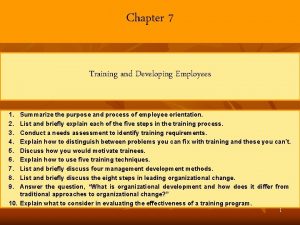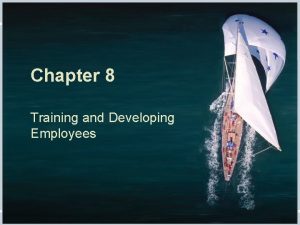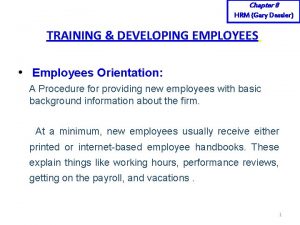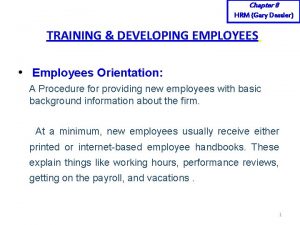Training and Developing Employees Chapter 8 Copyright 2009


























- Slides: 26

Training and Developing Employees Chapter 8 Copyright © 2009 Pearson Education, Inc. publishing as Prentice Hall 1

Orienting Employees • Employee orientation provides new employees with basic background information needed to perform their jobs satisfactorily • Socialization is the continuing process of instilling in all employees the attitudes, standards, values and behavior patterns expected by the company Copyright © 2009 Pearson Education, Inc. publishing as Prentice Hall 2

Types of Orientation Programs • Can be brief, informal introductions or lengthy, formal programs of a half-day or more • New hires usually receive printed or web-based handbooks, employee benefits, personnel policies, daily routine, company organization/operations and safety measures/regulations Copyright © 2009 Pearson Education, Inc. publishing as Prentice Hall 3

Purposes of Orientation • The employee should feel welcome • He or she should understand the organization in a broad sense (past, present, culture and vision) as well as key policies and procedures • The employee should be clear about company expectations • The employee should begin the socialization process Copyright © 2009 Pearson Education, Inc. publishing as Prentice Hall 4

The Orientation Process • Is performed by a HR specialist • Orientation can utilize technology like personal digital assistants (PDAs); computer disks containing discussions of corporate culture, facilities videos and welcome messages; or orientation websites filled with info on the company’s take on hiring, ethics and policies • Employers may use Virtual Orientation for employees off-site Copyright © 2009 Pearson Education, Inc. publishing as Prentice Hall 5

Training’s Purpose and Process • Training refers to methods employers use to give new or present employees the knowledge and skills needed to perform their jobs • Training today is characterized by three things: 1. Increasingly technology-based 2. Trainers focus more explicitly on improving organizational performance Copyright © 2009 Pearson Education, Inc. publishing as Prentice Hall 6

Training’s Purpose and Process, cont. 3. Training includes more than technical skills and usually includes teambuilding, decisionmaking and communication skills training Copyright © 2009 Pearson Education, Inc. publishing as Prentice Hall 7

The Training and Development Process Copyright © 2009 Pearson Education, Inc. publishing as Prentice Hall 8

Training Needs and Analysis • What training (if any) does the employee require – often called “skills gapping” • Two traditional needs approaches 1. Task analysis is a detailed study of the job to determine what specific skills the job requires 2. Performance analysis means verifying that there is a performance deficiency and determine what will rectify the deficiency Copyright © 2009 Pearson Education, Inc. publishing as Prentice Hall 9

Competency Models • Generic models or set of guidelines for jobs or closely related groups of jobs • Competency means knowledge, skills and behaviors that enable employees to effectively perform their jobs Copyright © 2009 Pearson Education, Inc. publishing as Prentice Hall 10

Setting Training Objectives • After discovering needs trainers set concrete, measurable instructional objectives that specify what outcomes should be achieved • Provide focus for efforts and a benchmark for evaluation Copyright © 2009 Pearson Education, Inc. publishing as Prentice Hall 11

Traditional Training Techniques • On-the-job training • Informal learning • Apprentice training • Behavior modeling • Videoconferencing distance learning Copyright © 2009 Pearson Education, Inc. publishing as Prentice Hall 12

Computer and Internet-Based Training • DVD based training • Simulated learning • Internet-based training • Learning portals • Virtual classrooms • Mobile learning • Instant messaging Copyright © 2009 Pearson Education, Inc. publishing as Prentice Hall 13

Training for Special Purposes • Providing lifelong learning • Diversity training • Training for teamwork and empowerment • Global HR issues Copyright © 2009 Pearson Education, Inc. publishing as Prentice Hall 14

Managerial Development and Training • Managerial development is any attempt to improve managerial performance by through training efforts including: – In-house programs such as courses, coaching and rotational assignments – Professional programs such as SHRM seminars – University programs such as executive MBAs Copyright © 2009 Pearson Education, Inc. publishing as Prentice Hall 15

Trends in Management Development • Program should be aligned with company strategy and goals • Emphasis on supplementing traditional methods with realistic methods • Trainee assessment precedes manager development programs Copyright © 2009 Pearson Education, Inc. publishing as Prentice Hall 16

Copyright © 2009 Pearson Education, Inc. publishing as Prentice Hall 17

Managerial On-the-Job Training • Job rotation • Coaching/ understudy method • Action learning Copyright © 2009 Pearson Education, Inc. publishing as Prentice Hall 18

Action Learning Methods • Case-study method which is useful if the trainer: – Guides trainees without stating his/her opinions in examining possible alternatives and consequences – Keeps in mind his/her own analysis of the case situation is irrelevant and may hinder the group – Keeps the aim of training in mind and facilitates the group discussion Copyright © 2009 Pearson Education, Inc. publishing as Prentice Hall 19

• Management games • Improvisation • Outside seminars • University-related programs • In-house learning and development centers • Learning portals and accounts • Executive coaches Copyright © 2009 Pearson Education, Inc. publishing as Prentice Hall 20

Organizational Development • Organizational development (OD) aims to change attitudes, values and beliefs of employees so that employees can identify and implement changes usually with the aid of a consultant – Survey feedback – Sensitivity training – Team-building Copyright © 2009 Pearson Education, Inc. publishing as Prentice Hall 21

Organizational Change • Difficult to achieve but necessary due to international competition • Individuals, groups and even entire organizations may resist change because they are used to the usual way of doing things or fear of power loss Copyright © 2009 Pearson Education, Inc. publishing as Prentice Hall 22

Lewin’s Process for Overcoming Resistance • Unfreezing forces striving to maintain status quo • Moving new behaviors, values and attitudes through organizational changes or other management techniques • Refreezing and reinforcing new behaviors to prevent relapse into old way of doing things Copyright © 2009 Pearson Education, Inc. publishing as Prentice Hall 23

Evaluating Training and Development Efforts • Basic issues include how to design the evaluation study and what training effect to measure • Controlled experimentation uses both a training group and a control group in order to determine the effects of training Copyright © 2009 Pearson Education, Inc. publishing as Prentice Hall 24

Training Effects to Measure • Reactions to training program • Determine whether trainees learned the principles, skills and facts they were supposed to learn • Determine if the trainee’s behavior on the job changed due to training • Evaluate results achieved in terms of training objectives Copyright © 2009 Pearson Education, Inc. publishing as Prentice Hall 25

Copyright © 2009 Pearson Education, Inc. publishing as Prentice Hall 26
 Chapter 8 training and developing employees
Chapter 8 training and developing employees Chapter 8 training and developing employees
Chapter 8 training and developing employees Socializing orienting and developing employees
Socializing orienting and developing employees Developing employees for future success
Developing employees for future success Copyright 2009
Copyright 2009 International color standards
International color standards Dell all rights reserved copyright 2009
Dell all rights reserved copyright 2009 Copyright 2009 pearson education inc
Copyright 2009 pearson education inc Diffrazione della luce zanichelli
Diffrazione della luce zanichelli Copyright 2009
Copyright 2009 Irraggiamento zanichelli
Irraggiamento zanichelli Copyright 2009 pearson education inc
Copyright 2009 pearson education inc Copyright 2009 pearson education inc
Copyright 2009 pearson education inc 2009 pearson education inc
2009 pearson education inc Copyright 2009 pearson education inc
Copyright 2009 pearson education inc The process of selecting training and evaluating employees
The process of selecting training and evaluating employees Reinforcement theory of motivation
Reinforcement theory of motivation Chapter 10 motivating and satisfying employees and teams
Chapter 10 motivating and satisfying employees and teams Grooming ppt presentation
Grooming ppt presentation Iso 9001 2015 awareness training
Iso 9001 2015 awareness training Code of conduct training for employees ppt
Code of conduct training for employees ppt Gmp training topics
Gmp training topics Needs analysis example
Needs analysis example Chapter 9 attracting and retaining the best employees
Chapter 9 attracting and retaining the best employees The marketing plan the central instrument
The marketing plan the central instrument Chapter 11 developing and managing products
Chapter 11 developing and managing products Chapter 2 developing marketing strategies and plans
Chapter 2 developing marketing strategies and plans
